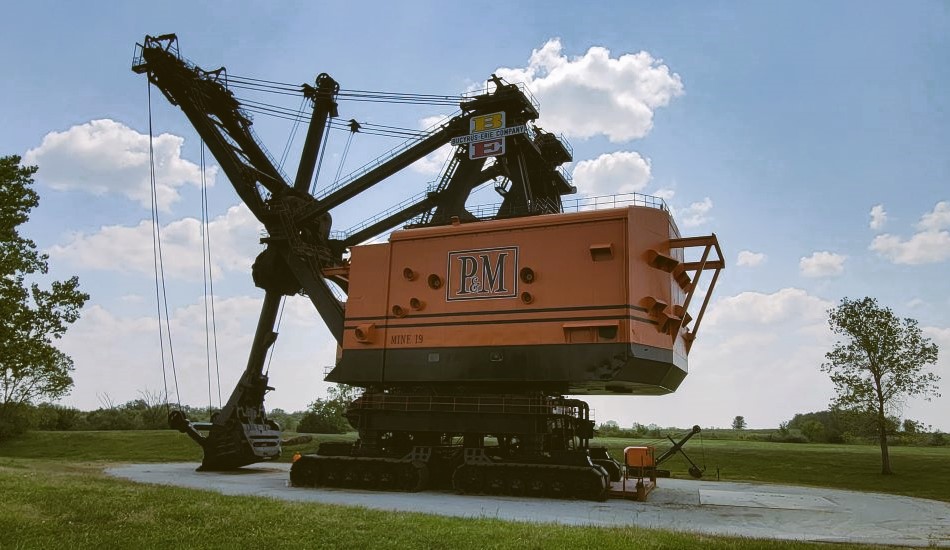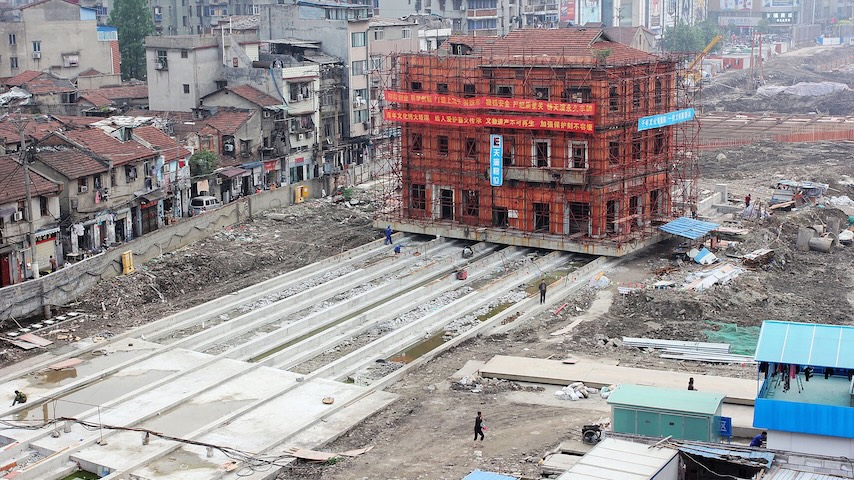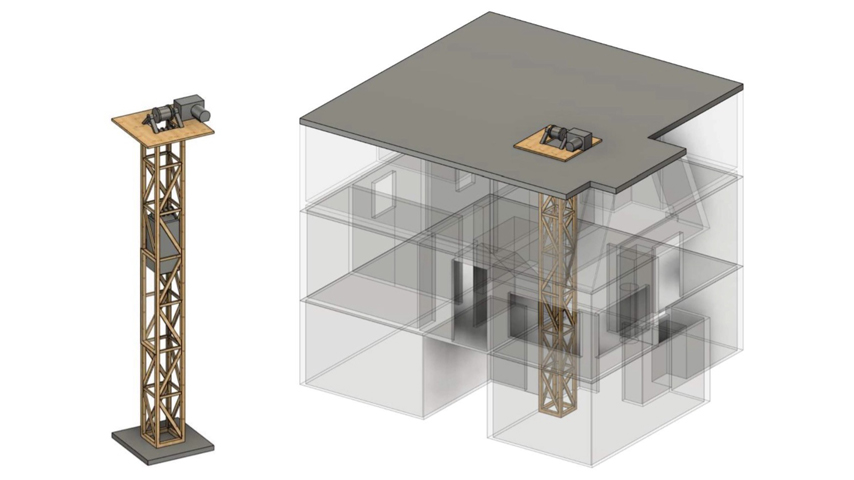Big Brutus Survives as Mining Museum
Big Brutus Survives as Mining Museum


ASME Landmark in Kansas is still the largest remaining electric shovel.
Mining is a tough job, and machines have been a key and important tool for miners extracting minerals from the Earth. The size of them is constrained when working underground, but that all changes on the surface. Open pit mines are huge and deep, and extracting minerals depends on some of the largest mechanical equipment on the market.
The largest now sits above a decommissioned strip mine on the Kansas plains. Dubbed “Big Brutus” in 1962, the colossal electric shovel worked the pit of a strip mine until 1974 removing overburden to uncover coal.
Rising 16 stories above its crawler tracks, the monster machine was the mechanical marvel of its time, recognized as an ASME Landmark in 1987. Built in 1962, it worked the Pittsurg and Midway Mine 19 in West Mineral, Kan., until 1974 when it was deemed uneconomical. In 2018, it was listed on the National Register of Historic Places.
Today, Brutus is the center of a 20-acre museum dedicated to the mining heritage of Southeast Kansas. Some 22,000 people visited the monster machine in 2023, said Cindy Morris, the museum’s executive director. “They come from every part of the U.S., and even from around the world,” she said. “People make a point of coming here.”
"Big Brutus” was built in 1962 by the Bucyrus Erie Co. for the Pittsburg & Midway Coal Mining Co. Model 1850B was shipped in pieces on 150 rail cars from Wisconsin to Kansas, where it was reassembled. The shovel, with a capacity of 90 cubic yards, was designed to dig from 20 feet to 69 feet to expose shallow coal seams that were mined with smaller equipment. The bucket capacity could fill three full-sized hopper cars.
It cost $6.5 million to manufacture, weighs 11 million pounds, and sports a 150-foot boom, reflecting the large numbers that companies invested in mid-20th century machinery. And it could move relatively quickly for a machine of its size, topping out at 22 mph with about 15,000 peak hp.
Become a Member: How to Join ASME
Brutus was shut down in 1974 when the owners determined the mine lost its economic advantage. It was considered too large to move and was left in place. Pittsburg & Midway Coal Co. donated the shovel in 1985 as the centerpiece of the museum.
The museum itself is located next to the old mine, which the state of Kansas converted to the Mined Land Wildlife Area. All but 2,000 acres of the 14,500-acre reclaimed park was surface-mined from the 1920s until 1974. There are more than 1,000 strip-mine lakes, dense vegetation, and steep hills from the mining. Native prairie grass can be found on 4,000 acres of the site.
Brutus does not work anymore; its motor and generator were removed when it was decommissioned. Visitors can still climb into its cab and sit at the controls to get an idea of what it was like to work the machine.
In its time, Brutus was not the largest electric shovel working but it is the largest still standing. The largest was built in 1965 by the Marion Power Shovel Co. in Marion, Ohio. Nicknamed “The Captain,” its bucket could excavate 180 cubic yards in one pass. It used more than 22 MW of electricity from 20 main drive motors powered from four 14,000-volt generator sets.
Read ASME's Landmark Description: Big Brutus
The machine worked until 1991 when a fire broke out in its lower works from a burst hydraulic line that sprayed hot fluid on an electrical relay panel. It was scrapped when the owners deemed repairs to be too expensive.
Marion also built another monster machine named “The Big Digger” that had a 125-cubic-yard bucket on a 215-foot-long boom. It was scrapped in 1990 in Muhlenberg County, Ky.
Bucyrus-Erie and Marion Power Shovel remain as examples of 19th century machine works that grew and flourished in the 20th century. Neither is in existence today.
Marion was purchased in 1977 by Dresser Industries, which later merged with Halliburton Inc.. Bucyrus International purchased what became the Marion division in 1997 and closed the Marion, Ohio, production plant shortly after. Bucyrus-Erie was renamed Bucyrus Internationl in 1997 and was sold to Caterpillar Inc. in 2011.
After all of that, "Big Brutus" stands as the largest electric shovel remaining, and as a museum piece pays tribute to the hard work performed by miners and their contribution to society.
John Kosowatz is senior editor.
The largest now sits above a decommissioned strip mine on the Kansas plains. Dubbed “Big Brutus” in 1962, the colossal electric shovel worked the pit of a strip mine until 1974 removing overburden to uncover coal.
Rising 16 stories above its crawler tracks, the monster machine was the mechanical marvel of its time, recognized as an ASME Landmark in 1987. Built in 1962, it worked the Pittsurg and Midway Mine 19 in West Mineral, Kan., until 1974 when it was deemed uneconomical. In 2018, it was listed on the National Register of Historic Places.
Today, Brutus is the center of a 20-acre museum dedicated to the mining heritage of Southeast Kansas. Some 22,000 people visited the monster machine in 2023, said Cindy Morris, the museum’s executive director. “They come from every part of the U.S., and even from around the world,” she said. “People make a point of coming here.”
"Big Brutus” was built in 1962 by the Bucyrus Erie Co. for the Pittsburg & Midway Coal Mining Co. Model 1850B was shipped in pieces on 150 rail cars from Wisconsin to Kansas, where it was reassembled. The shovel, with a capacity of 90 cubic yards, was designed to dig from 20 feet to 69 feet to expose shallow coal seams that were mined with smaller equipment. The bucket capacity could fill three full-sized hopper cars.
It cost $6.5 million to manufacture, weighs 11 million pounds, and sports a 150-foot boom, reflecting the large numbers that companies invested in mid-20th century machinery. And it could move relatively quickly for a machine of its size, topping out at 22 mph with about 15,000 peak hp.
Become a Member: How to Join ASME
Brutus was shut down in 1974 when the owners determined the mine lost its economic advantage. It was considered too large to move and was left in place. Pittsburg & Midway Coal Co. donated the shovel in 1985 as the centerpiece of the museum.
The museum itself is located next to the old mine, which the state of Kansas converted to the Mined Land Wildlife Area. All but 2,000 acres of the 14,500-acre reclaimed park was surface-mined from the 1920s until 1974. There are more than 1,000 strip-mine lakes, dense vegetation, and steep hills from the mining. Native prairie grass can be found on 4,000 acres of the site.
Brutus does not work anymore; its motor and generator were removed when it was decommissioned. Visitors can still climb into its cab and sit at the controls to get an idea of what it was like to work the machine.
In its time, Brutus was not the largest electric shovel working but it is the largest still standing. The largest was built in 1965 by the Marion Power Shovel Co. in Marion, Ohio. Nicknamed “The Captain,” its bucket could excavate 180 cubic yards in one pass. It used more than 22 MW of electricity from 20 main drive motors powered from four 14,000-volt generator sets.
Read ASME's Landmark Description: Big Brutus
The machine worked until 1991 when a fire broke out in its lower works from a burst hydraulic line that sprayed hot fluid on an electrical relay panel. It was scrapped when the owners deemed repairs to be too expensive.
Marion also built another monster machine named “The Big Digger” that had a 125-cubic-yard bucket on a 215-foot-long boom. It was scrapped in 1990 in Muhlenberg County, Ky.
Bucyrus-Erie and Marion Power Shovel remain as examples of 19th century machine works that grew and flourished in the 20th century. Neither is in existence today.
Marion was purchased in 1977 by Dresser Industries, which later merged with Halliburton Inc.. Bucyrus International purchased what became the Marion division in 1997 and closed the Marion, Ohio, production plant shortly after. Bucyrus-Erie was renamed Bucyrus Internationl in 1997 and was sold to Caterpillar Inc. in 2011.
After all of that, "Big Brutus" stands as the largest electric shovel remaining, and as a museum piece pays tribute to the hard work performed by miners and their contribution to society.
John Kosowatz is senior editor.






